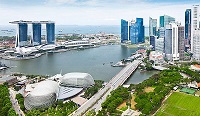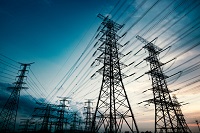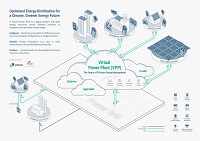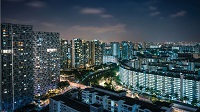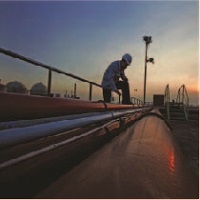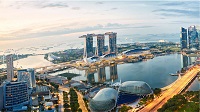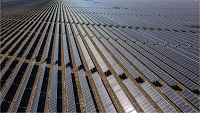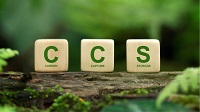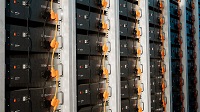A Singapore Government Agency WebsiteHow to identify
Official website links end with .gov.sg
Government agencies communicate via .gov.sg websites
(e.g. go.gov.sg/open).Trusted websites
Secure websites use HTTPS
Look for a lock ( )or https:// as an added precaution. Share sensitive information only on official, secure websites.
Speeches
06 Jun 2014
Distinguished Guests
Ladies and Gentlemen
Good morning
- A big welcome to students and teachers from the ITE, polytechnics and universities. This is the second year that “Changing the Game” and Energy Connect have been held in conjunction with EMA’s annual Energy Forum; This platform was set up to connect youths with developments and people in Singapore’s Power sector.
- “Changing the Game” is a board game that simulates policy-making issues in the energy arena, allowing participants to influence their respective energy futures. As part of the game, each of you will assume one of four roles – Business, Citizen, Government or a Non-Government Organisation. These are the key stakeholders in the energy policy-making process.
- You will also be assigned into teams at your respective tables. Each team will have all four roles represented, and will work together to develop the energy policies and landscape of your respective region. The game is designed to give you a flavour of the trade-offs and considerations that go into policy-making in what is known as the “Energy Trilemma”.
- What is the “Energy Trilemma”? Basically, energy policy must address three key considerations:
- Energy security – this is to have a diversified energy base such that there is no single point of failure;
- Economic competitiveness – this is to have energy that is both competitively priced and affordable; and
- Environmental sustainability – this is to have energy sources that are environmentally responsible and minimize the impact on the environment.
- Energy policy needs to find a balance among these three priorities. There is no single solution that will meet every country's needs, as the needs of each country vary due to size, population, stage of economic development and natural endowments.
- In a moment, you will be experiencing these trade-offs yourself.
- Singapore is a small country with limited natural energy resources. Hence, we are heavily reliant on energy imports – be it piped natural gas from our neighbours Indonesia and Malaysia, or liquefied natural gas, or LNG, via our new LNG terminal.
- Geography also limits the types and amounts of renewable energy that we can deploy. Currently, the only type of alternative energy that we can tap on is solar. Solar energy has the potential to enhance our energy security as it does not require fuel imports. It is also clean with zero emissions. However, because of our built-up environment, we have limited spaces to deploy solar. In addition, while Singapore is sunny year-round, we have quite a bit of cloud cover. There can also be shadows from neighbouring buildings. This causes what is known as intermittency. Large deployments of solar, coupled with intermittency, can potentially create stability challenges for the grid.
- EMA is taking a holistic review to facilitate the entry of solar energy. We are looking to build up internal capabilities such as solar forecasting. Another area of work is to understand the correlation between solar outputs at different parts of the island. These, coupled with understanding how batteries can be better deployed, will help us better manage the intermittency challenges.
- It is within this context that Singapore needs to balance the Energy Trilemma. The first dimension of the Energy Trilemma that I would like to talk about is energy security. To diversify our fuel sources from piped natural gas and enhance our energy security, Singapore has begun operations at our largest energy engineering project thus far – the $1.7 billion, 40ha Liquefied LNG terminal on Jurong Island. In anticipation of growing demand, the LNG terminal will be expanded over the next few years, increasing the existing capacity through the addition of a fourth LNG tank.
- With the commissioning of the LNG terminal in May last year, coupled with future expansion plans for the terminal, Singapore is now better positioned to plug into the global gas market and diversify our energy options. Energy diversification is one of the strategies to achieve energy security and resilience.
- The second dimension of the Energy Trilemma is that of economic competitiveness. A big part of economic competitiveness is the cost of fuel. Another part is in developing a competitive electricity market. Since 2000, Singapore has gradually opened up its retail electricity market to promote the efficient supply of competitively priced electricity to consumers. What this means is that for larger consumers of electricity, such as those in the manufacturing sector, they can shop around for electricity packages that best meet their needs. This is similar to how you would shop for the best mobile package to meet your personal needs. If energy is not competitively priced and affordable, it would not be sustainable to consumers in the long run.
- This year, we will continue to open up the retail electricity market to smaller commercial customers. The long-term goal is to eventually make this option available to all consumers. Such competition will benefit consumers in the form of competitive prices and improved services.
Environmental Sustainability
- The third and last dimension of the Trilemma is that of environmental sustainability. To address the challenge of energy sustainability, our efforts are focused on two fronts. Firstly, we are investing in energy research in solar and power generation improvements to identify viable, new energy solutions. This is on the supply side. On the demand side, there is much potential for energy efficiency improvements, such as implementing more efficient cooling, and energy management systems that enable consumers to track and optimise their energy usage.
- The Power sector is a vibrant and growing sector. With the demand for energy set to increase, there are even more exciting developments in the pipeline. We are already supporting the test-bedding of energy-related solutions through the Electric Vehicle and the Pulau Ubin Micro-Grid Test-Beds, and also catalysing R&D in areas such as smart grids, power generation, gas and energy storage. The scholarship covers full tuition fees, allowances, overseas exchange allowances and CCA allowances. Scholars can also look forward to various opportunities including industrial attachments, overseas exchange and closed-door networking events.
- The next round of applications for the EIS will open in January 2015, so mark this date on your calendars. In the meantime, if you wish to know more about the scholarship, please feel free to approach any of my EMA colleagues, who will be happy to answer your questions.
- During your breaks later, do also take some time to visit the exhibitions, which will give you additional information about developments in the Power sector. Some of you might have already seen the large 3-D pop-up board when you arrived this morning. The board is for you to pen your thoughts on what “Powering Lives” means to you.
- We also have gifts that you can collect at the exhibition. All you need to do is visit the exhibition, take part in the activities, complete the activity sheet and return it to any of the EMA staff stationed at the counter near the exhibition panels. The gifts will be given on a first-come-first-served and while-stocks-last basis.
- Last, but not least, in the afternoon, we have invited industry leaders and industry representatives to share with you their respective working experiences, and panellists to answer any questions that you may have on embarking on a career in the Power sector. I urge you to make full use of this opportunity to get to know the sector and its people better.
- I’m sure all of you are eager to get on with the game. Please enjoy yourselves and best of luck!
- Thank you.
Introduction
Balancing Energy Policy Trade-Offs
Energy Trilemma in Singapore's Context
Energy Security
Economic Competitiveness
“Powering Lives”: A Rewarding and Meaningful Career in the Power Sector
Conclusion
